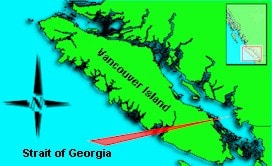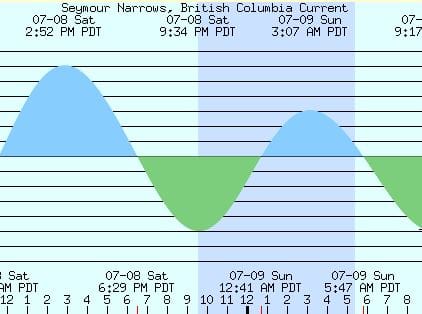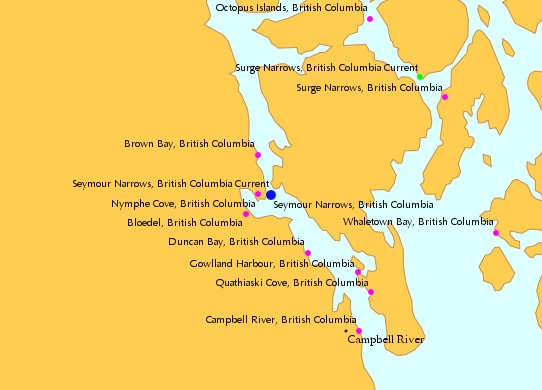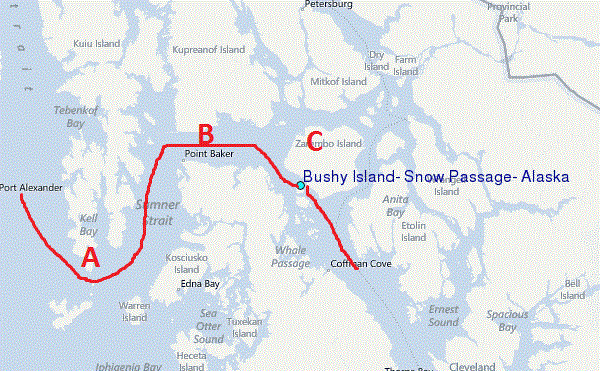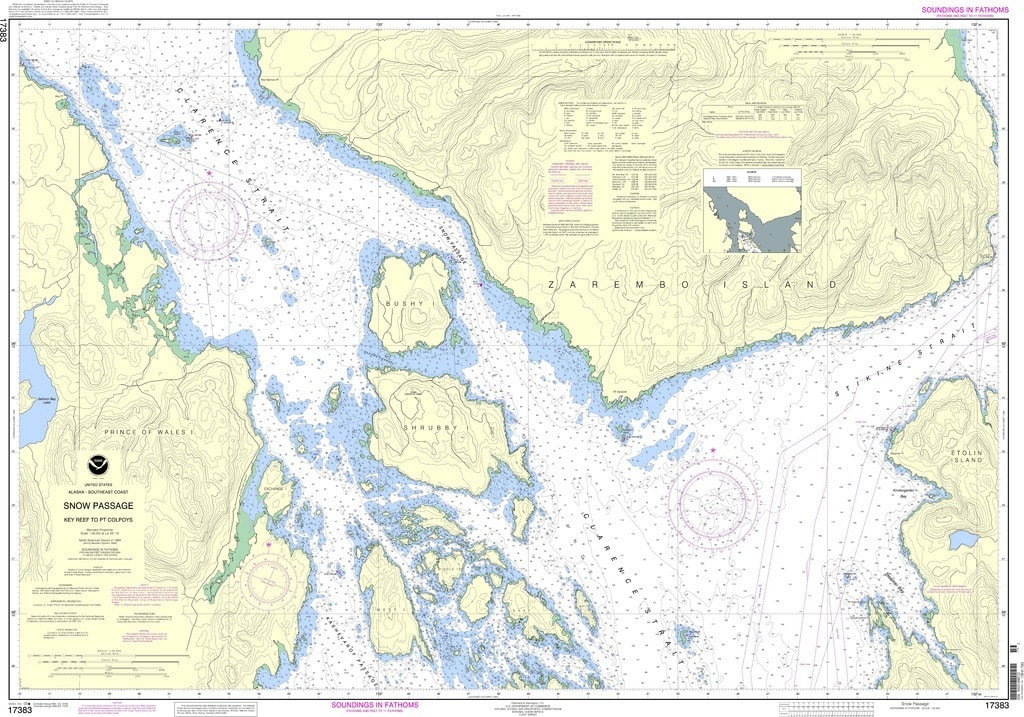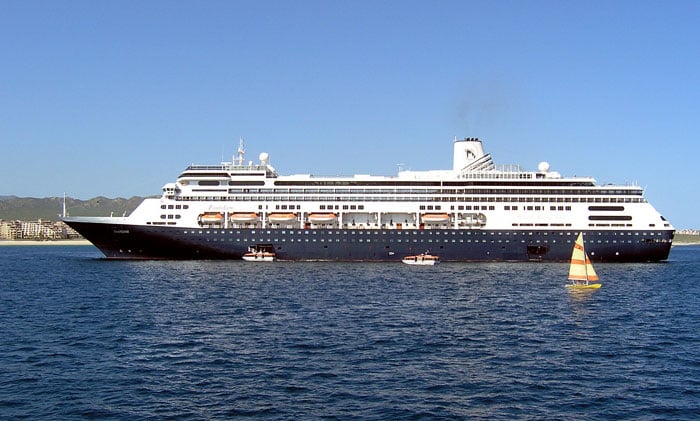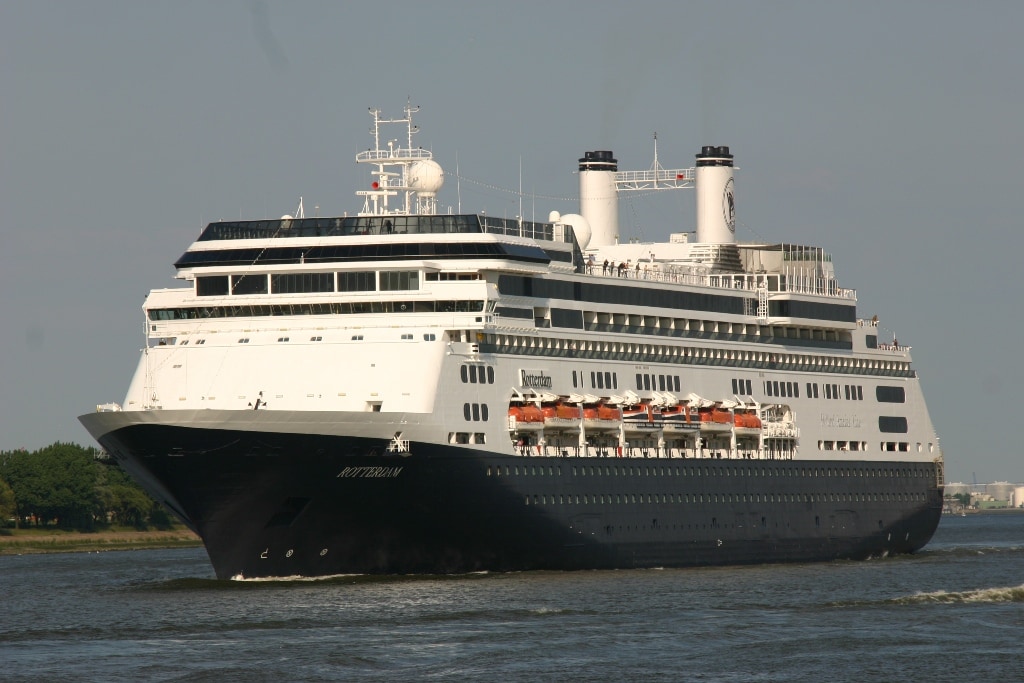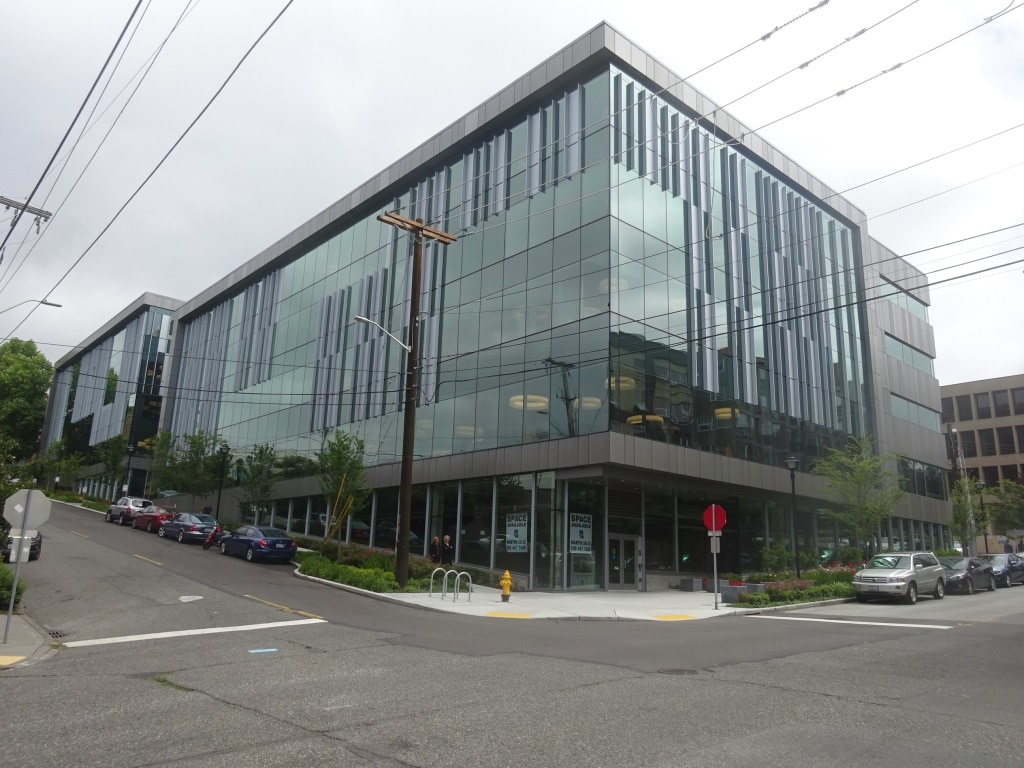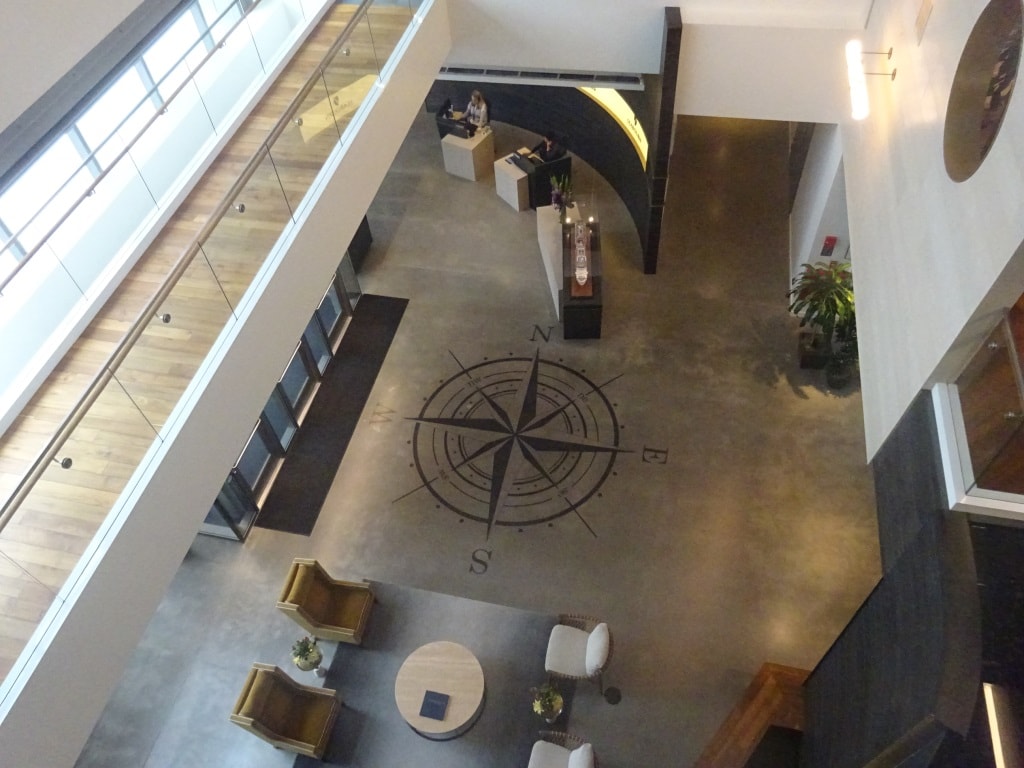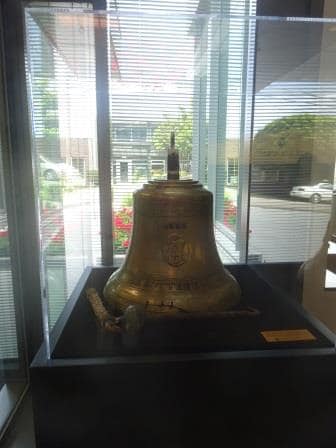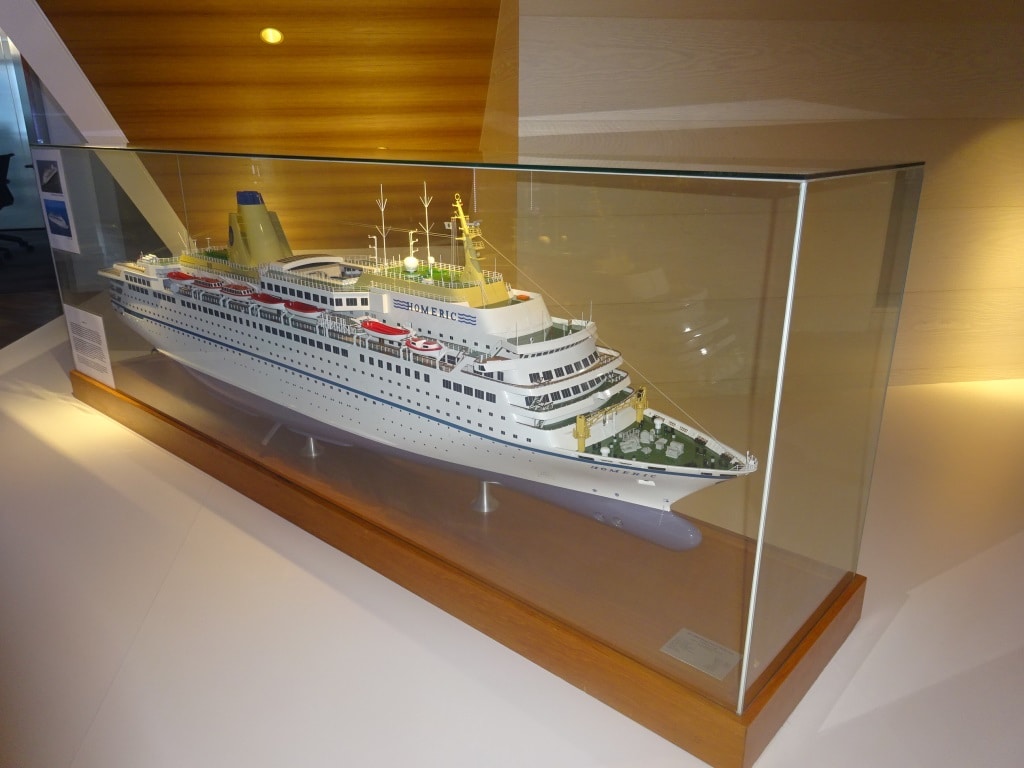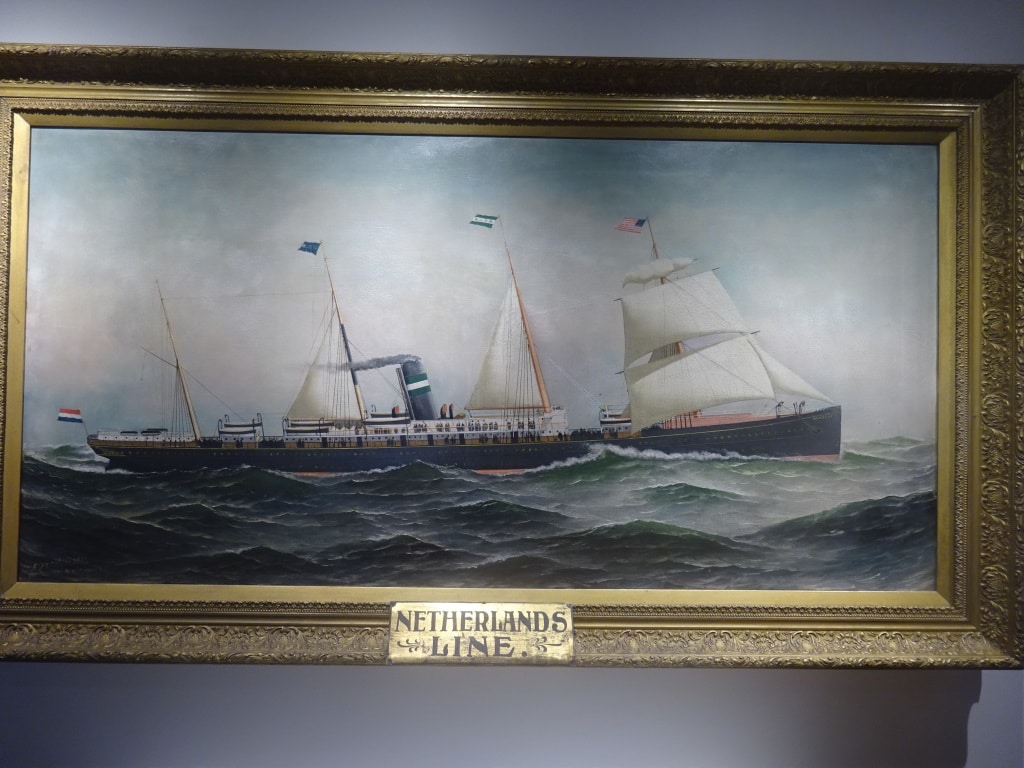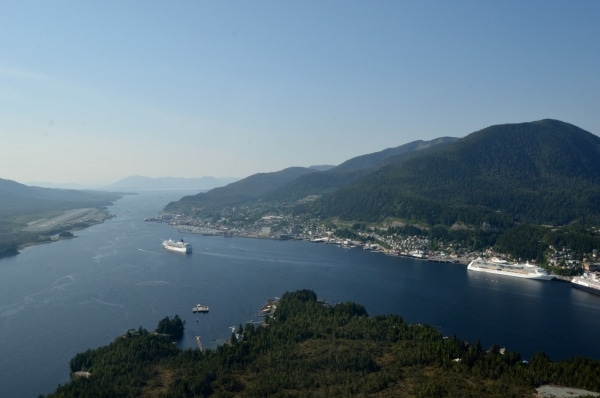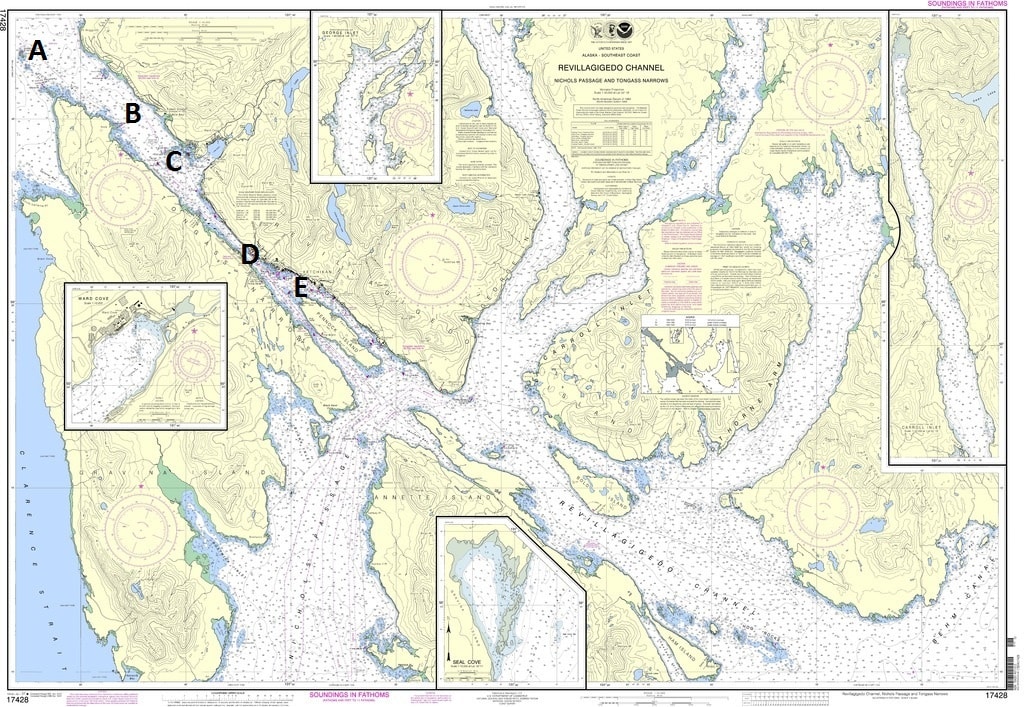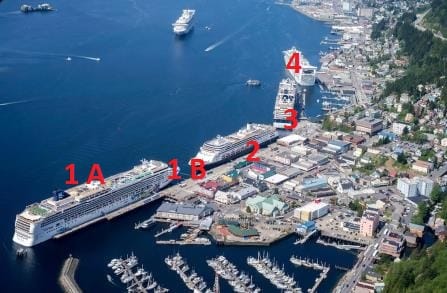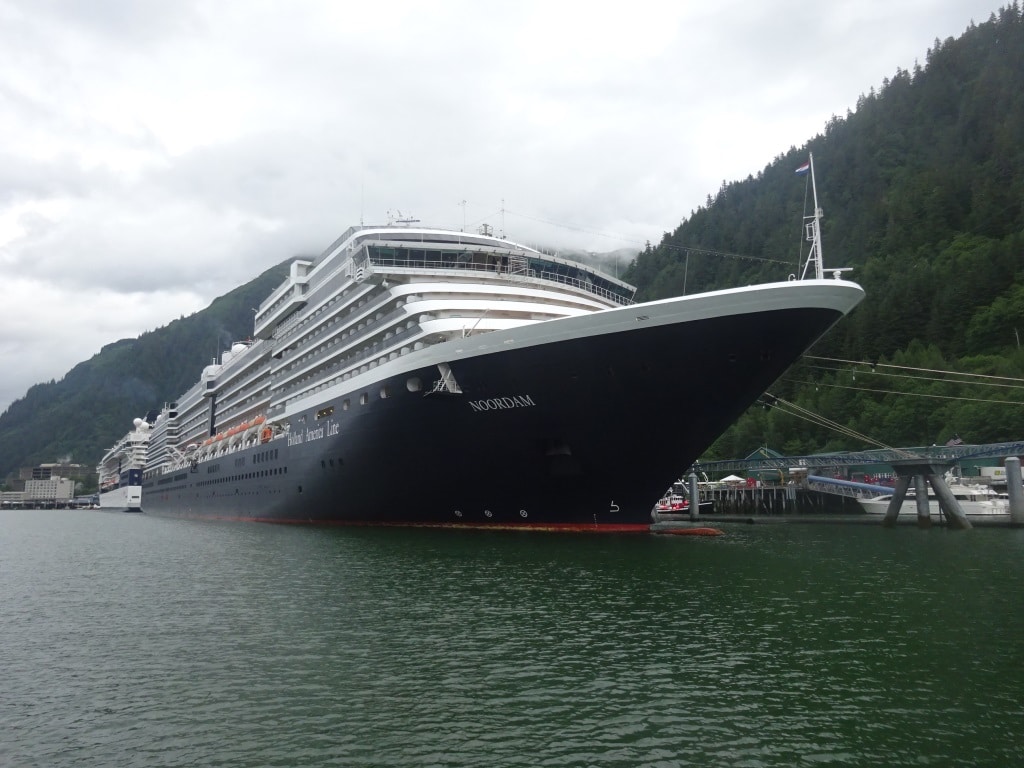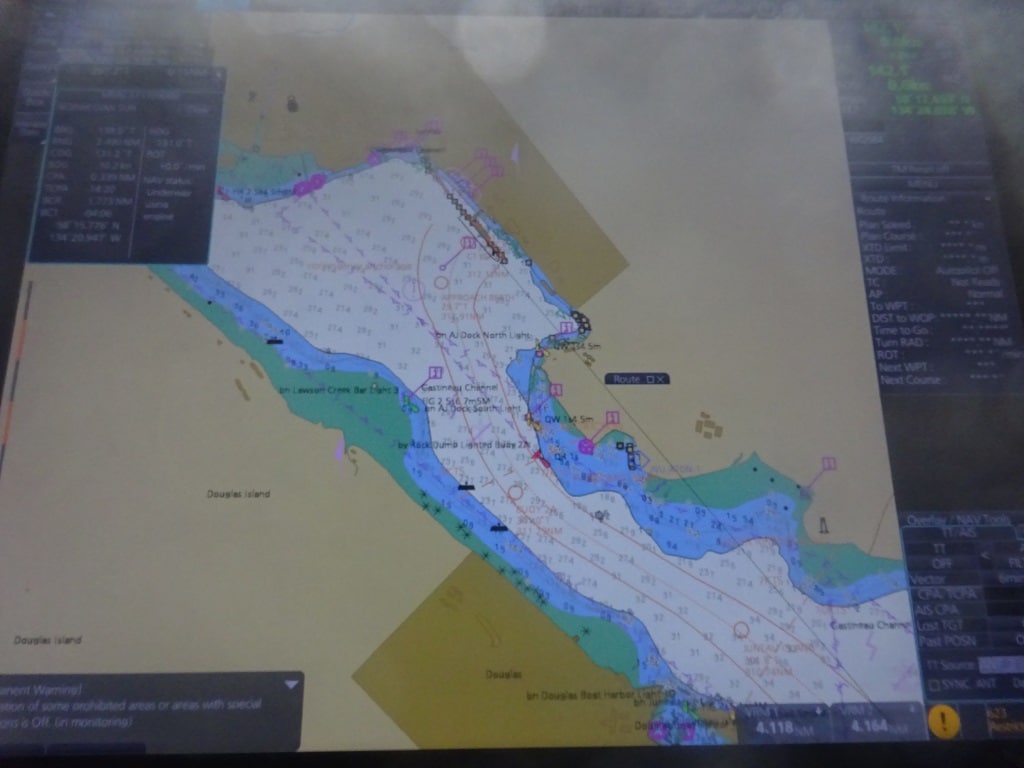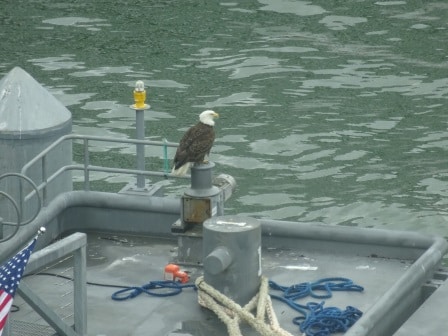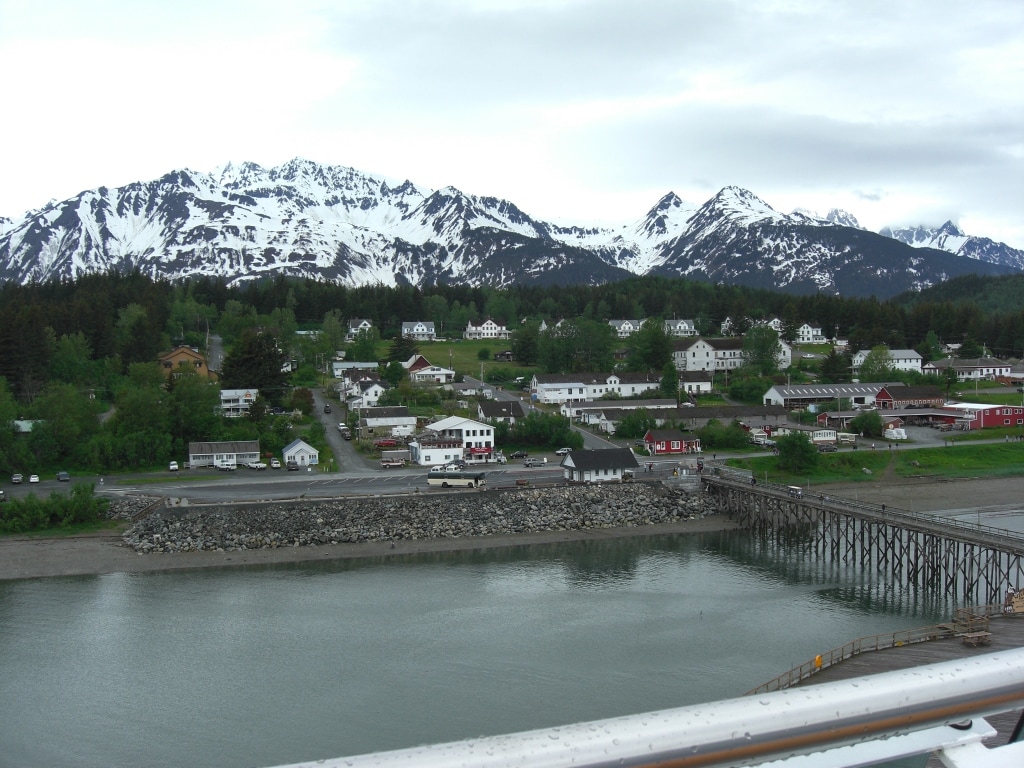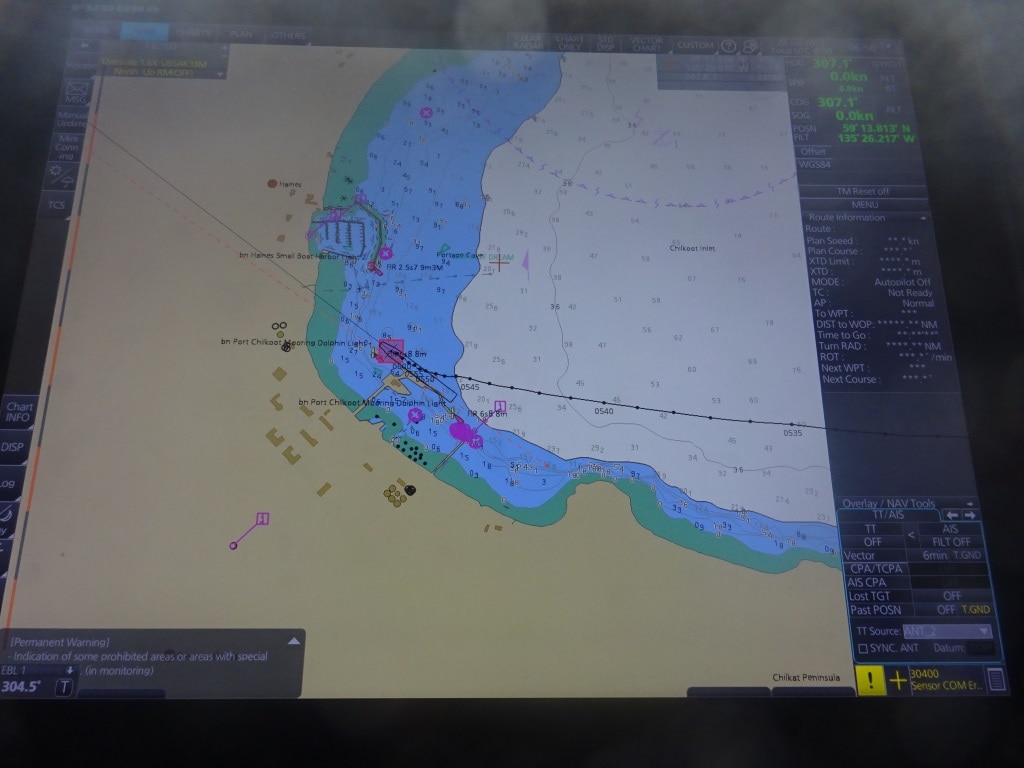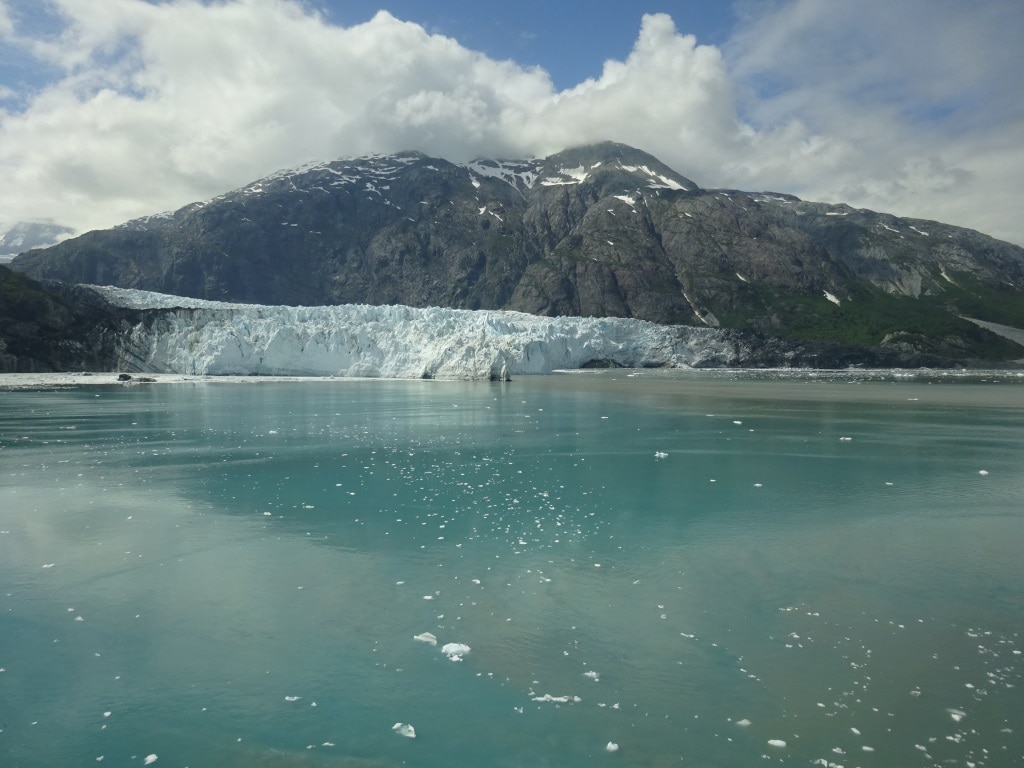After the whole parade had made it through the Narrows everybody swerved out into the wide open spaces of Georgia Strait. Because the ships have not all the same engine configurations, they do not all run the same speed at the same time. Some go a bit faster first and then stop one or more engines to adjust for the final ETA; some go slower first and then speed up using their most ideal engine configuration. During the night the ships were all over the place but when coming closer to the Lions Gate Bridge they all started to line up again.
The picking order then depends on the dock that a ship has been assigned. We are all aiming for the same time alongside, one minute passed 07.00 hrs. and thus we all want to pass under the bridge at the same time. Obviously that does not work and thus the arrangement is that the ship that has to go the furthest into the port goes first. And that is the ship or ships that have been assigned to Ballantyne Pier, about halfway up the harbor. The next ship is the ship assigned to Canada Place East as it has to make a wider/ longer turn to line up for the hole between the container terminal and Canada Place. Lastly the ships follow that are assigned to Canada place West, facing Stanley Park.
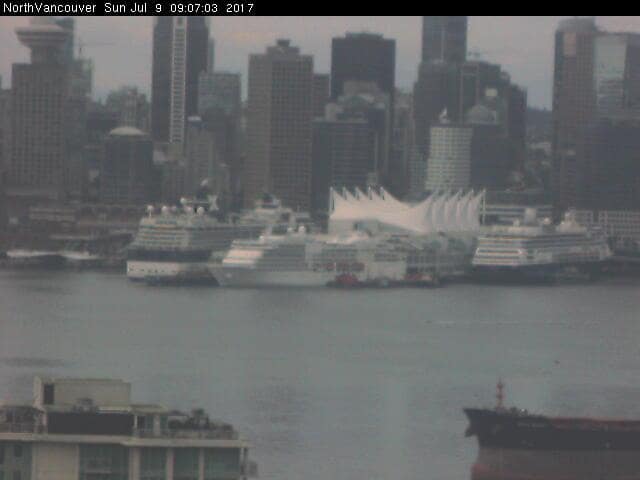
All happily docked at Canada Place. From Right to left, Zaandam, Seven Seas Explorer, Celebrity Infinity. Photo courtesy, Lesley Schoonderbeek who somehow found out there is a webcam at the Vancouver Northside of the harbor, overlooking Canada Place.
The reason we all want to dock at 07.01 hrs. is because of labor costs. If we put a line ashore before 07.00 hrs. then there is a lot of extra cost involved to pay the longshoremen. So we come alongside, look at the time on the GPS and at 1 minute past seven the first messenger line goes ashore for the first rope. There is only one exception to the rule and that is when you come from deep sea or go to deep-sea. Then the lines are handled by dedicated linesmen, who work all over the port, and they get paid for 4 hour intervals and so it does not matter. When you are coastal; which includes coming from Alaska, you can use the longshoremen who attend to the ship during the day, as you are using regular Canadian labor. For departure there are similar rules, so we always try to be off the dock on time as well.
Today was a busy day in the port as we had the Seven Seas Navigator, The Celebrity Explorer and the Zaandam all at Canada Place and The World at Ballantyne. The World is more of a country club than a real cruise ship as the cabins are owned by the people inside them and all those owners together decide where the ship is going for its cruises. Which means that sometime last year or earlier, there must have been a vote that decided on a visit to Alaska. Because of this voting system, the ship quite often pops up in places where the Jet Set is gathering and she has been seen at the GP of Monte Carlo, the Americas Cup race, the Bi-annale of Venice, etc. etc. I do not know if it is good value for money as the maintenance charge is quite high but at least you do not have to pack and unpack all the time, because the cabin is only used by your good self and thus everything can stay in the closets.
Holland America ships most often docks at Canada Place West, or North, which is the end of the West side after the bend in the pier. It is also the best spot as far as the Navigators are concerned as on a Sunday, the boulevard is always full of people. The East does not have much of a boulevard or esplanade as has the utility doors and service openings for the Pan Pacific Hotel on top of Canada place. Normally it is the men who are on the bridge ogling the ladies through the binoculars but today our Lady navigators joined in as there was some sort of Body Building competition going on and a whole parade of very muscular men came by under the portside bridge wing. However the consensus that brain over brawn was a lot more important.
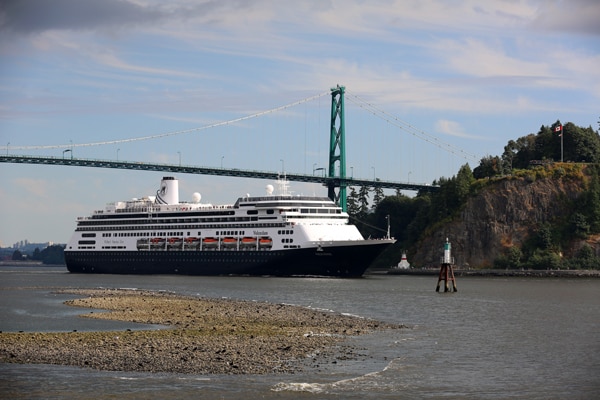
The sister of the Zaandam, the Volendam sailing under the Lions Gate. The Volendam is calling at Canada Place tomorrow.
Tonight the slack tide at Seymour Narrows is at 01.28 in the morning and the current drops under 4 knots at 00.28. in the morning. Thus we will aim for that accordingly and then see how the traffic lines up for the hole to decide the exact time of transit.
Weather for tomorrow: rain in the early morning and a windy and chilly day later.
